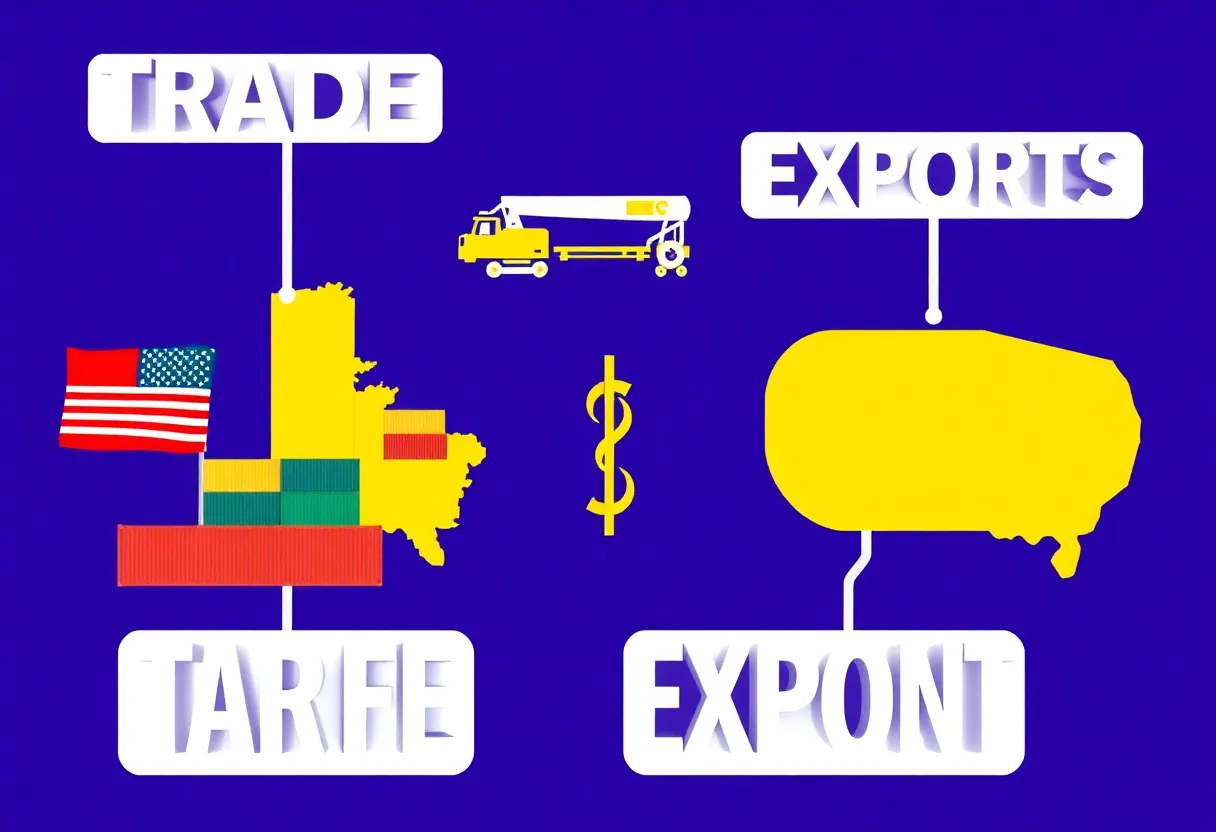

An illustration showing the dynamics of trade tariffs as discussed by U.S. President Trump.
U.S. President Trump has announced plans for a potential 25% tariff on European Union imports, focusing on cars and other goods. This move raises concerns about higher consumer prices and trade relations as the EU responds firmly. An analysis of trade dynamics reveals the complexities and potential economic impacts of these tariffs, prompting calls for collaboration instead of confrontation.
In the latest round of trade tensions, U.S. President Donald Trump has set his sights on the European Union (EU), announcing a potential 25% tariff on imports from the region. This decision comes as Trump claims the EU was formed with the intention to screw over the United States. His comments came during a Cabinet meeting, leaving many wondering about the implications of such significant tariffs.
According to the President, the upcoming tariffs primarily target cars and other imported goods. This means that consumers might soon feel the pinch when shopping for everything from vehicles to various everyday items. While the proposed tariffs on EU goods are still on the table, it’s important to note that tariffs on imports from Canada and Mexico are set to kick in on April 2.
Trump’s criticisms toward the EU hinge on the claim that European markets are not as open to U.S. cars and agricultural products, a point he strongly emphasized. He argues that while U.S. markets readily welcome EU goods, the same courtesy is not reciprocated. Citing a persistent trade deficit in America, he insists that these tariffs are necessary to address unfair trade practices.
Interestingly, some experts have pointed out that the EU actually recorded a substantial trade surplus of €155.8 billion (approximately $159.6 billion) with the U.S. in terms of goods just last year. However, the U.S. facing a €104 billion deficit in services complicates the narrative. Not to mention, key exports from the EU to the U.S. include machinery, vehicles, chemicals, and pharmaceuticals, which contribute significantly to both economies.
Economists are already expressing concern about the consequences of these proposed tariffs. Many warn that the increased costs could lead to higher prices for everyday consumers, sparking inflation and potentially disrupting the current economic balance. It seems a fine line to walk—while Trump aims to protect U.S. interests, the economic reality might come with a hefty price tag for ordinary Americans.
The EU has not taken the news lying down. Officials have stated that they are ready to respond firmly and immediately to any unjustified tariffs that may be imposed. The European Commission highlighted the benefits that the EU has brought to American businesses through reduced costs and the harmonization of regulations. It’s clear that both sides have a lot at stake.
Instead of continuing down this path of confrontation, the EU is urging both sides to find common ground and preserve trade opportunities. After all, a cooperative approach might serve both parties better than a tit-for-tat tariff battle.
Trump’s latest remarks have already sent ripples through the financial markets. The Dow Jones Industrial Average, S&P 500, and Nasdaq all experienced mid-day drops, reflecting the unease among investors regarding potential disruptions in trade relations. With ongoing discussions about a possible trade deal with the UK—where trade dynamics are more balanced—many are left questioning the long-term strategy of the U.S. regarding international trade.
As the clock ticks down toward the implementation of these tariffs, both U.S. consumers and businesses will be watching closely. The next steps in this trade saga could have wide-ranging effects on prices and availability of goods. Will collaboration win the day, or are we headed for a more prolonged economic showdown? Only time will tell!
News Summary On April 15, Jerry Bowman Jr. was officially sworn in as the new…
News Summary On April 18, 2025, the Captain Shreve softball team dazzled fans with a…
News Summary In his latest address, Shreveport Mayor Tom Arceneaux discussed critical issues facing the…
News Summary The Caddo Parish School Board has voted to close three schools, including Queensborough…
News Summary Livvy Dunne, the renowned LSU gymnast and social media influencer, announces her retirement…
News Summary The Federal Reserve, under Chairman Jerome Powell, is adopting a cautious approach to…